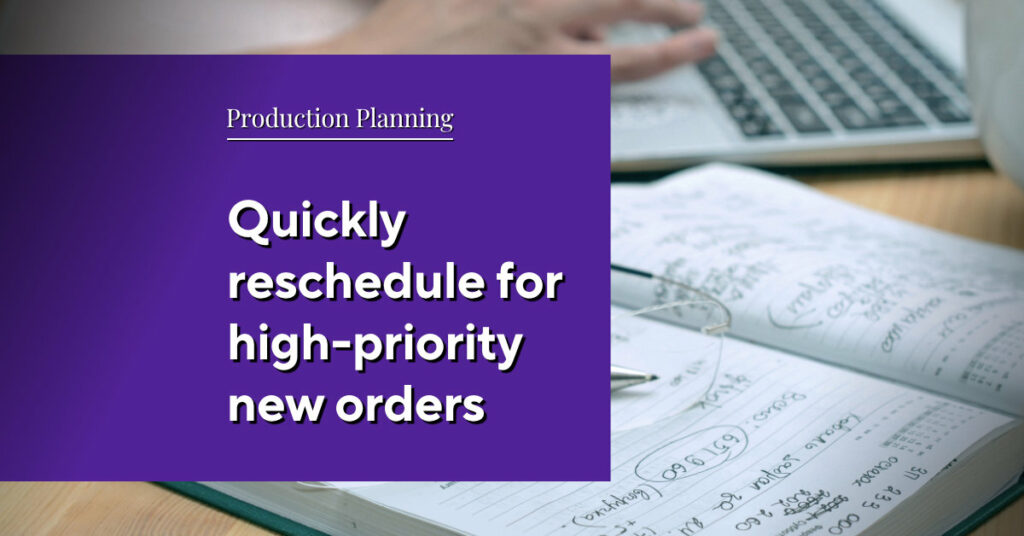How to identify optimization potential
The sudden arrival of the Christmas season catches me off guard every year. Planning and organization are often overlooked, leading to last-minute shopping sprees, budget overruns, and unnecessary stress. Of course, this could all be avoided by implementing a structured approach to Christmas planning, setting goals, creating a budget, and tracking progress.
Fortunately, the Christmas project has a defined timeframe and allows me to tailor the planning process to my personal preferences and complexity requirements. In contrast, optimizing business processes presents very different challenges since these are ongoing, far more complex and have an impact on many different stakeholders.
In this article we want to explain how mathematical optimization can support companies in identifying the hidden optimization potential in their company and harness this for long-term gain.
Common problem areas requiring optimization
In today’s competitive business landscape, companies across various industries face a multitude of challenges that can impede their growth and efficiency. These challenges often stem from underlying issues in key areas such as inventory management, supply chain management, production planning, and transport.
- Inventory management: Inadequate inventory planning leads to stockouts, resulting in lost revenue due to the inability to fulfill customer demands. On the other hand, excessive inventory incurs substantial carrying costs associated with storage and the risk of obsolescence if the goods remain unsold.
- Supply chain management: Poor communication with suppliers and limited visibility into supply chain operations hinder the procurement of the right goods at competitive prices. Inefficient logistics and transportation practices lead to unreliable delivery schedules, increasing customer dissatisfaction and potential business losses.
- Production planning: Inefficient planning processes, characterized by long set-up and throughput times, limit visibility into production operations. Workflows that are not streamlined create bottlenecks and resource wastage, further hampering production efficiency. Unforeseen disruptions such as labor shortages, unplanned downtime, and rush orders make production planning even more complex and maintaining consistent output becomes challenging.
- Transportation: The main challenge is to schedule delivery routes which are cost-effective while still meeting customers’ demands for fast or, at best, next-day delivery. Aspects such as mode of transport, minimizing fuel consumption to reduce the environmental impact, the unavailability of drivers and vehicles as well as last-minute changes to delivery schedules also require effective management.

Would you like to know how OPTANO can help you identify and implement your optimization potential?
Business planning optimization: The key to improved efficiency
By addressing the issues above, you can streamline operations, enhance efficiency, productivity and profitability as well as achieve sustainable growth. Identifying the optimization potential in your company is a key step in this process.
Before you undertake any optimization initiatives, it is crucial to make a critical assessment of your company’s current situation. To do so, all stakeholders must be identified and you must rigorously evaluate how efficient your present methods are. To identify areas where performance is lacking, resources are underutilized, and bottlenecks are impeding progress, it is essential to gather data on key performance indicators (KPIs) across various departments. This procedure may seem formidable, especially given the complexities of daily operations. However, the lack of appropriate technology is frequently the main obstacle to realizing a company’s full potential. Manual methods like Excel can only offer limited assistance in a task of this magnitude.
Fortunately, a variety of technological solutions are now available that use cutting-edge analytics, machine learning (ML), and artificial intelligence (AI) to assist in identifying and implementing areas which require optimization. These powerful tools can pinpoint areas for improvement within a business by analyzing data patterns and uncovering hidden relationships. Additionally, they can make reliable predictions about future outcomes, allowing companies to optimize demand forecasting and make informed strategic decisions.
More interesting articles
Mathematical optimization: a powerful tool to identify optimization potential
Mathematical optimization is fast emerging as a key enabler of optimization across many industries. It is a powerful tool that deploys sophisticated mathematical techniques to find the best solutions to the most complex business problems given a set of constraints.
Mathematical models and algorithms are used to analyze vast amounts of data in order to identify areas where efficiency can be improved, predict the impact of various decisions and recommend the optimal course of action. For example, it can identify the optimal allocation of resources, schedule tasks efficiently (e.g. machine scheduling to minimize production and maximize output) or manage inventory levels.
Achieve your business potential with OPTANO
Planning software like OPTANO deploys mathematical optimization techniques on its optimization platform. Leveraging our extensive expertise in production planning, supply chain management, deployment and route planning, as well as across diverse industries, our platform caters to even the most specialized needs.
OPTANO accompanies your optimization process every step of the way
The foundation of any optimization project is to identify the potential for improvement within your planning. This is where OPTANO can help!
All of our projects commence with a workshop which includes all stakeholders. Our project leaders help you to define the objectives, the variables and the constraints which need to be taken into account in the model of your business using the relevant data from your company. If this data is not readily available in a processable format, we can prepare it for you. This lays the groundwork for the targeted optimization of your network.
The next step involves constructing a model that accurately represents your problem. To ensure the accuracy of the presented results, a comprehensive validation process is carried out. Additionally, rigorous testing is conducted to guarantee error-free optimization runs. Once the model has been successfully developed, it can be deployed for data-driven optimization. Customized to your specific objectives, the target plan will be calculated under various optimization scenarios. This provides you with actionable insights and the potential to automate your decision-making process.
Unparalleled benefits thanks to OPTANO and mathematical optimization
Applying the OPTANO platform in your optimization projects can bring about significant long-term benefits. Improved resource allocation, reduced waste and streamlined processes lead to cost savings, increased productivity and enhanced efficiency overall. Data-driven decision-making and optimized operations lower the risk of costly errors and give you a competitive edge in the market.
If you would like to learn more about how OPTANO can help you unlock the potential in your company and implement it for long-term gains, contact us directly. Our Business Development Manager, Denise Lelle, is happy to answer your questions on optimization and OPTANO. Simply make use of our contact form below to make an appointment!
The principles of optimization are universally applicable. However, achieving optimal results is dependent on meticulous planning, effective organization, and seamless implementation. While a Christmas planning app may be sufficient for a small-scale project like organizing holiday festivities, OPTANO is the go-to solution for tackling more complex optimization projects.
Contact us today!
How can we help you?
You are also welcome to use our contact form. We will then get back to you as soon as possible!
We look forward to talking to you!








